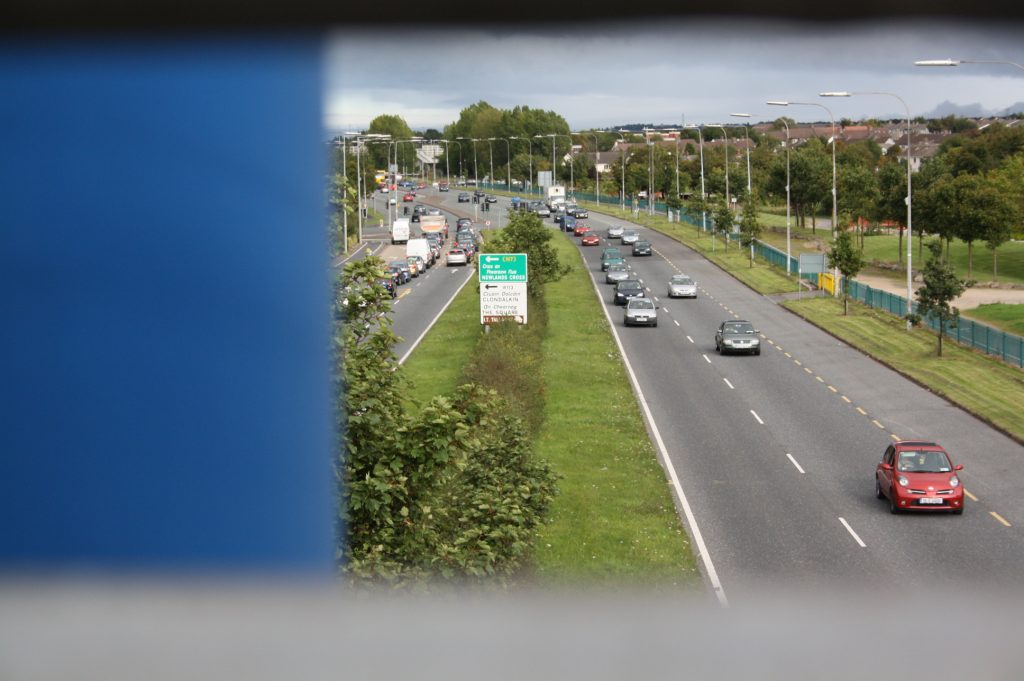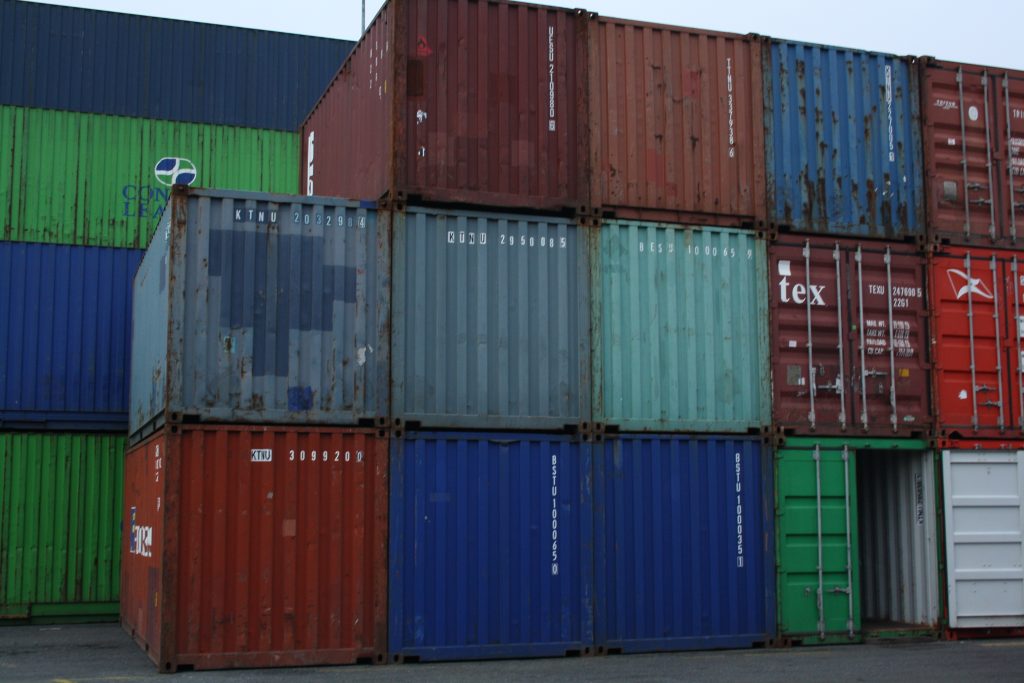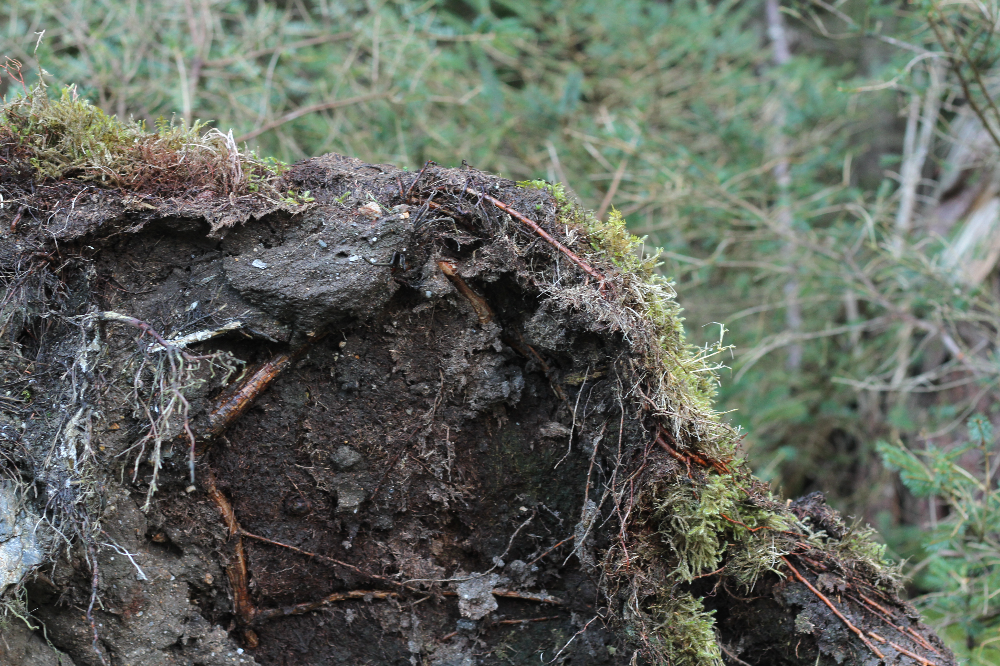Shane Finan is a visual artist from Ireland. He works with mixed media installation to create places. He writes computer programs for these installations, linking the places that he makes to contemporary technology. In April 2020, he was due to begin a residency with Visual Arts in Rural Communities (VARC), collaborating with Kielderhead Wildwood Project, Northumberland Wildlife Trust as part of the residency programme ENTWINED. Rural. Land. Lives. Art. The residency has been postponed, but he is sharing some of the background research and development from his project to date (more information https://varc.org.uk/shane-finan-the-wood-wide-web/).
In 2014, after a frustrating period of unemployment, I gained a role as a graphic designer with a print firm in Tallaght, in an industrial estate in south Dublin. Having lived in the city for nearly two years, I had familiarised myself with the passages and rhythms of the city structure. But the time spent in an industrial estate opened my eyes to a supply chain that I had previously been unaware of.

Credit: Shane Finan
One of the first things I noticed was the flow of resources to the various industrial units in the area where I worked. The lorries and trucks delivered raw materials, such as glass, fibres, food, plastics or car parts from other parts of the country. Assembly was carried out in the industrial estate, with clients usually based inside the city as the final destination for goods. This dreary industrial estate is one of the general supply lines for the city.
What was striking was the way the chain operated. The cost to the final recipient for any work carried out was high, considering the supply chain and the people involved in moving goods from one place to another. This is natural in supply chain economics, but I had never seen it as acutely before, and it made me realise two things.
The first was the economic imbalance between city and country. Those suppliers who brought materials from rural areas were paid at a lower rate, despite bearing the burden of importing the raw materials, and of transporting them to the south Dublin estate. This imbalance was a micro climate of the macro level economic flow in globalised capitalist markets.
The second was that resourcing was required to operate in the countryside, via an industrial estate, to service a city’s requirements. Because of the need of space and cheaper labour, this meant that there was a necessity for resources to come from areas where they could be manufactured, mined, or otherwise sourced.
Both of these points made me suddenly aware of the fragility of the city, and of its reliance on the countryside and communication infrastructure for resources and supplies. Although on a macro scale, most of these supplies come from international markets, even on a micro (national) scale, this meant that the city of Dublin could not function without these supply chains. More poignantly, the grittiness and dishevelled nature of the work in the industrial estate was an enormous contrast to the “clean” image of the city.

Credit: Shane Finan
I grew up in the countryside, and had always been aware of the imbalance of cost of living and salaries between the city and the rural. However, this time spent in the industrial estate made me far more aware of the existence of the seen and the unseen in the city: The engine that makes sure the car keeps running.
This fragility was something I learned more about when working on a European Union project proposal about port security. On this proposal, my eyes were opened to the macro-level array of supply chains that exist in ports throughout Europe, and their own fragility. The shipping container industry changed international trade and made possible the macro-level supply chains that supply cities and countries today (Levinson, 2006). Shipping containers are big business, but to maintain supply lines in international trade they are also regulated only insofar as they can be based on the availability of people. Security breaches, like human trafficking or movement of illicit materials, is very difficult to track.
These micro and macro level observations made me acutely aware of a type of balance in supply that I had never considered before: Without the countryside the city cannot function. And more than this: Without the grit of an industrial and agricultural underbelly, the pristine, techno-utopic city would not exist. These might seem like obvious statements to any scholar of globalisation, but their effects were never as strongly felt by me personally until I was wrapped in those structures.
Later in 2014, after an accident on the factory floor led to a co-worker nearly losing his arm, I left the company (still probably in a state of shock) to leave behind the industrial grit and position in the link between country and city. I was lucky to be hired by Trinity College Dublin to manage a European project at this time, and so moved from the semi-city industry to the city proper again.
The experience has not left me, however. I see pieces of the work that I was involved with in strange places – on the seats of Ryanair airplanes, or the side of construction machinery on building sites. I am aware of that link, from country to city, and aware of what it costs people who live in that world between worlds.
But more than everything else, I am aware of the mask that is created between the “grit” of the country and the “cleanliness” of the city. David Batchelor wrote about the desire for a pristine state of existence for modern people in his exploratory book Chromophobia. In it, he outlines how the contemporary citizen strives for a clean, white, dirt-free environment (2000). His exploration of this idea is poignant because it shows up the falseness of the quest for the pristine. He also highlights how the move away from “dirt” is perceived as a move toward civility.
The city operates in this way. This is why there is outrage in cities when there is a visible grime. Cities hide their “dirt”, for example when the Australian government built false partition buildings to hide slum aboriginal neighbourhoods when pitching for the 2000 Olympic Games (Pilger, 2002). Many cities worldwide, including recently in the USA, ban homelessness and force homeless people out of city centres, not fixing the problem but removing its visibility (Lam, 2019).
The end result is a removal of responsibility, a separation between the “dirt” and the “clean”. This is important in any philosophy that suggests a closer connection to nature. This connection between rural and urban has been intentionally eroded in a dream of a pristine city reality. Although an illusion, the dream is, as Kant may have described it, a “Regulative Ideal”. It is an unattainable goal, but one that nonetheless guides the philosophy of the expansion of cities.

Credit: Shane Finan
This idea was exemplified in the satirical video artwork The Dust Channel by Roee Rosen, which I was lucky enough to see in Friche la Belle de Mai, Marseilles in 2018. In this video, an operetta about Dyson Hoovers, a couple slowly remove all dirt, filth and grime from their contemporary apartment, creating a clean environment (Rosen, 2016). Simultaneously, police come and joyfully cart away the musicians playing in the opera, all of whom gradually take on the image of refugees or (in this case) Palestinians. The dirt is removed, along with the culture, the music, the history. And all that remains is the Dyson-inspired clean world. Or at least this is the illusion (the video proceeds after the end of the opera to show a Dyson Hoover channel-hopping as it searches for the best news and entertainment about vacuum cleaners amid images of protest and unrest).
By using satire, intense imagery, and a unique imagination, Rosen highlighted the illusion of the pristine as a Regulative Ideal, a false concept of a perfect world. I believe the perfect world has more dirt, not less. It is one where the natural and the city collide, where the desire for the pristine is one of the ideas that dies away.
As I write this, COVID-19 is spreading rapidly in Europe (in the last month it has forced the curator that I am working with to be grounded in her home in Turin before postponing our exhibition launch indefinitely in Clare, Ireland). I have had to postpone my planned residency at Kielder. Uncertainty is everywhere. The pristine is suddenly more valuable, as hand sanitisers sell out and public spaces are seen as unsafe.
In an even stranger turn of events in this saga, the spread of the virus has also amplified xenophobia, in this case anti-Chinese sentiment. Rumours abound about how this manifested, and who may have been to blame. As the first cases occurred in China, this is where the diatribe is directed. In Europe, north Italy has become a pariah for the unclean – in the first two weeks of the pandemic in Ireland, most cases reported were from people who had recently travelled to north Italy.
COVID-19 exemplifies the disconnection between the rural and the urban, between nature and people. In the anthropocentric view, we hold a belief that this type of pandemic is beyond us – our medical incisiveness and antibacterial advancements have, we believe, kept us safe. But in truth, they are potentially making us less so. Although immunity cannot shield us from all disease, our own immune systems need to be practiced if we are to overcome major outbreaks. By killing 99.9% of bacteria, we may have left room for the feared 0.1%.
In each area, we have lost sight of the importance of the network. Divisions are created between the city and the rural, between the civilised and the wild. These divisions only serve to increase our reliance on a system that has already failed us.
_________
Batchelor, D. (2000). Chromophobia: Reaktion books.
Lam, K. (2019, 15/12/2019). Cities are criminalizing homelessness by banning people from camping in public. That’s the wrong approach, report says. USA Today. Retrieved from https://eu.usatoday.com/story/news/nation/2019/12/10/homeless-camping-bans-criminalization-report/4378565002/
Levinson, M. (2006). The Box: How the Shipping Container Made the World Smaller and the World Economy Bigger: Princeton University Press.
Pilger, J. (2002). Globalisation; the New Rulers of the World. In: UK.
Rosen, R. (2016). The Dust Channel. In. Marseilles: Friche la Belle de Mai.
